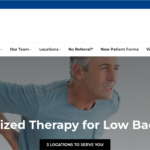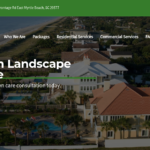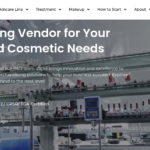Introduction to Professional Visit Passes
Professional visit passes serve as essential tools in the modern business landscape, designed to streamline the process of site visits for professionals across various industries. These passes are official documents or digital credentials that permit professionals to access specific sites or locations for business purposes. Their primary purpose is to eliminate unnecessary delays that could hinder business operations, thereby maximizing efficiency and productivity.
The significance of professional visit passes cannot be overstated. In a business context where time is a critical resource, these passes facilitate the seamless movement of professionals between different locations. This is particularly important for industries such as construction, healthcare, consulting, and real estate, where frequent site visits are a norm. By providing quick and authorized access, professional visit passes ensure that projects remain on schedule and that business activities proceed without interruption.
One key benefit of using professional visit passes is their ability to enhance security while maintaining operational efficiency. They help verify the identity and credentials of visiting professionals, which is crucial for maintaining site safety and compliance with regulatory standards. This verification process not only protects sensitive information and assets but also instils confidence among stakeholders about the professionalism and legitimacy of the visitors.
Moreover, professional visit passes contribute to improved record-keeping and management of visitor data. Businesses can track the movement of professionals, monitor the duration of their visits, and maintain detailed logs for future reference. This data can be invaluable for auditing purposes, optimizing resource allocation, and identifying areas for operational improvement.
In conclusion, professional visit passes are indispensable for businesses seeking to optimize their operations. By providing authorized and efficient access to various sites, they play a crucial role in maintaining smooth and secure business activities. As businesses continue to evolve in an increasingly dynamic environment, the adoption of professional visit passes will undoubtedly remain a best practice for achieving operational excellence.
Professional visit passes come in various types, each tailored to meet specific needs and scenarios. Understanding the distinctions between these passes can significantly enhance operational efficiency and ensure that the right pass is utilized for the right purpose.
Temporary Passes
Temporary passes are designed for short-term visits, typically lasting from a few hours to several days. These passes are ideal for contractors, consultants, or visitors who need limited access to a facility. They often include basic identification details and access permissions. Temporary passes are particularly useful in situations where security is paramount, as they can be easily revoked or modified based on the visitor’s requirements. For instance, a contractor working on a one-day maintenance project would benefit from a temporary pass that grants access only to specific areas.
Long-Term Passes
Long-term passes are intended for individuals who require ongoing access over an extended period, such as several weeks or months. These passes are typically issued to external partners, long-term consultants, or employees who are not permanent staff. Long-term passes often feature more comprehensive identification details and may include additional security measures like biometric verification. An example of an appropriate use case would be a long-term consultant working on a multi-month project requiring consistent access to various departments within an organization.
Event-Specific Passes
Event-specific passes are tailored for attendees of special events, conferences, or seminars. These passes are typically valid only for the duration of the event and may include specific access privileges related to the event’s location. Event-specific passes often feature branding and information pertinent to the event, enhancing both security and convenience. For example, a pass issued for a three-day corporate conference would allow attendees to access designated areas such as conference rooms, dining halls, and networking zones.
By selecting the appropriate type of professional visit pass, organizations can not only enhance security but also streamline operations, ensuring that visitors have the necessary access without compromising safety or efficiency.
Eligibility and Requirements
Securing a Professional Visit Pass (PVP) necessitates compliance with specific eligibility criteria and the provision of requisite documentation. Applicants generally must demonstrate a legitimate professional purpose for their visit, which can vary significantly depending on the industry and region. For instance, professionals in the technology sector might require different documentation than those in the healthcare industry.
One of the primary eligibility criteria is proof of employment. Applicants are typically required to present a formal letter from their employer verifying their position and the purpose of their visit. This letter should detail the nature of the work to be performed and the duration of the visit. Additionally, self-employed professionals might need to provide evidence of their business activities, such as contracts or client letters.
Identification is another crucial requirement. Applicants must submit valid identification documents, such as a passport or national ID card. In many cases, a copy of the applicant’s passport, including the biographical page and any relevant visa pages, is necessary. Some regions might also require a recent photograph of the applicant, adhering to specific size and format guidelines.
Furthermore, applicants must be prepared to clearly articulate the purpose of their visit. This includes providing detailed information about the activities to be undertaken, meetings to be attended, or projects to be managed. In some instances, additional documentation, such as invitation letters from host organizations or proof of conference registration, may be required.
It is also important to note that specific industries may have additional requirements. For example, healthcare professionals might need to present credentials or licenses to practice in their field. In contrast, those in the education sector may need to provide institutional affiliations or teaching certifications. Regional regulations can also impose unique stipulations, making it crucial for applicants to thoroughly research the requirements pertinent to their destination.
By ensuring all necessary documentation is meticulously prepared and accurately submitted, applicants can streamline the process of obtaining a Professional Visit Pass, thereby maximizing their efficiency and productivity during their professional engagements abroad.
Application Process
Applying for a professional visit pass is a structured yet straightforward process that ensures a smooth transition into your professional engagements. The initial step is determining the appropriate authority or organization responsible for issuing the pass. This could vary based on your location and the industry you are entering. Typically, these applications can be submitted either online through official government or organizational websites or in person at designated offices.
For online applications, it is vital to visit the official website of the issuing authority. There, you will generally find a dedicated section for professional visit passes, complete with detailed instructions and necessary forms. Ensure that you download or fill out the correct form to avoid delays. Online submissions often require digital copies of supporting documents, so it is essential to have these scanned and ready. Commonly required documents include a valid passport, a formal invitation or job offer, and proof of qualifications or expertise. Additionally, some online platforms may require the creation of a user account to track the application status.
In-person applications might necessitate a visit to the relevant government office or consulate. Before your visit, double-check the required documentation and make copies for submission. If possible, schedule an appointment to avoid long wait times. Bring along all necessary documents, including identification, proof of purpose, and any other specified paperwork. Remember to adhere to the office’s operating hours and arrive early to accommodate possible queues.
Regardless of the application method, obtaining a professional visit pass involves fees. These fees can vary depending on the country and the duration of your stay. It is prudent to check the latest fee structure on the official website or inquire directly from the issuing office to ensure you are prepared to make the payment.
To ensure a smooth application process, meticulously review all instructions and guidelines provided by the issuing authority. Pay close attention to detail when filling out forms, and double-check the accuracy of all information provided. Common pitfalls include incomplete forms, missing documents, and incorrect fee payments. By preparing thoroughly and following the instructions carefully, you can avoid these issues and expedite the approval of your professional visit pass.
Best Practices for Using Professional Visit Passes
Once professional visit passes are obtained, it is essential to implement best practices to maximize their efficiency. Effective management and tracking of these passes can significantly enhance organizational operations and ensure regulatory compliance. One of the foremost practices is to maintain a centralized database where all issued passes are logged, including details such as the holder’s name, pass number, issuance date, and expiry date. This database should be regularly updated and monitored to avoid any discrepancies.
Another critical practice is ensuring that professional visit passes are always up-to-date. Regular audits should be conducted to check the validity of all active passes. This can be facilitated by setting automated reminders for renewal dates, thus preventing any lapses that might disrupt business activities. Additionally, it’s prudent to have a clear process for renewing or reissuing passes as needed, including the necessary documentation and approval workflows.
It is also crucial to handle lost or stolen passes promptly and efficiently. Establish a clear protocol for reporting and deactivating lost or stolen passes to prevent unauthorized access. This protocol should include immediate notification to relevant authorities and the issuance of a replacement pass after proper verification. An efficient response system minimizes potential security risks and maintains the integrity of the organization’s access control measures.
Compliance with any rules or regulations associated with professional visit passes cannot be overstated. Organizations must stay informed about applicable laws and ensure that their practices align with regulatory requirements. This includes adhering to data protection regulations when managing personal information related to pass holders. Regular training and awareness programs can help staff stay informed about these regulations and the importance of compliance.
By following these best practices, organizations can optimize the use of professional visit passes, ensuring smooth operational workflows and robust security measures. Proper management, timely updates, and stringent compliance will contribute to the overall efficiency and reliability of the professional visit pass system.
Common Challenges and Solutions
When implementing professional visit passes within a business environment, several common challenges may arise. Addressing these issues efficiently is critical to maintaining seamless operations and ensuring the security and effectiveness of the visit pass system. Here, we explore some prevalent challenges and provide practical solutions.
One of the primary challenges is the validity of professional visit passes. Ensuring that passes are issued for the appropriate duration and purpose can be tricky. Businesses often struggle with managing the lifecycle of these passes, leading to expired or improperly authorized passes being used. To mitigate this issue, it is advisable to implement an automated system that tracks the issuance and expiration dates of all professional visit passes. Regular audits and timely renewals can further ensure that only valid passes are in circulation.
Security concerns are another significant challenge. Unauthorized access due to lost, stolen, or forged passes can pose substantial risks. To combat this, businesses should incorporate advanced security features such as encrypted QR codes, biometric authentication, and real-time pass usage tracking. Training employees on the importance of safeguarding their passes and promptly reporting any security breaches can also enhance overall security.
Logistical problems can also hamper the effectiveness of professional visit passes. This includes issues like delays in pass issuance, insufficient pass availability during peak times, and confusion over pass usage protocols. Streamlining the application and approval process using digital platforms can minimize delays. Additionally, maintaining a buffer stock of passes and providing clear, concise guidelines on their usage can alleviate logistical bottlenecks.
Another challenge is ensuring compliance with regulatory requirements. Businesses must adhere to local laws and industry regulations regarding visitor management. Keeping abreast of the latest regulatory changes and integrating compliance checks into the pass management system can help maintain adherence to legal standards.
By proactively addressing these challenges with strategic solutions, businesses can enhance the efficiency and security of their professional visit pass systems, thereby fostering a well-organized and secure work environment.
Case Studies and Real-World Examples
Professional visit passes have increasingly become instrumental in enhancing operational efficiency across various industries. Several businesses have successfully leveraged these passes to streamline their workflow, ensuring smoother visitor management and enhanced security. Here are some notable case studies and real-world examples that underscore the positive impact of professional visit passes on business operations.
One exemplary case is that of Tech Innovators, a leading software development company. Before implementing professional visit passes, Tech Innovators faced significant challenges in tracking visitor movements and ensuring timely meetings. By integrating a robust professional visit pass system, they reported a 40% decrease in visitor wait times and a marked improvement in meeting punctuality. According to John Doe, the Chief Operations Officer, “The professional visit passes have revolutionized our visitor management process, allowing us to focus more on our core tasks and less on logistical issues.”
Another compelling example comes from Greenfield Manufacturing. This company, known for its commitment to sustainable practices, found that professional visit passes not only improve visitor management but also contribute to its eco-friendly goals. By adopting a digital pass system, Greenfield Manufacturing reduced paper usage by 70%, aligning with its sustainability targets. Emily Smith, the Head of Sustainability, mentioned, “The switch to professional visit passes has not only streamlined our operations but also significantly reduced our environmental footprint.”
Healthcare facilities, such as City Hospital, have also benefited immensely from professional visit passes. City Hospital implemented these passes to manage the influx of visitors, ensuring that only authorized individuals gained access to sensitive areas. This led to a 50% reduction in unauthorized entries and enhanced patient privacy. Dr. Jane Harris, the hospital administrator, remarked, “Professional visit passes have been pivotal in maintaining a secure and efficient environment for both our staff and patients.”
These case studies vividly illustrate how professional visit passes can transform business operations, leading to increased efficiency, better security, and even environmental benefits. The testimonials from professionals across different sectors further highlight the tangible advantages and success these passes bring to modern workplaces.
Future Trends in Professional Visit Passes
The landscape of professional visit passes is poised for significant transformation, driven by rapid technological advancements and evolving business practices. As organizations seek to enhance efficiency and security, several emerging trends warrant attention.
One notable trend is the shift from traditional physical passes to digital professional visit passes. Leveraging mobile technology, digital passes can be issued and managed through smartphone applications, reducing the need for physical materials and streamlining the check-in process. This innovation not only minimizes administrative overhead but also offers a convenient, eco-friendly solution for visitors and hosts alike.
Enhanced security features are another critical area of development. Future professional visit passes may incorporate biometric verification, such as fingerprint or facial recognition, to ensure that only authorized individuals gain access to sensitive areas. Additionally, advanced encryption technologies will likely be employed to protect personal data and prevent unauthorized access. These measures will bolster the overall security framework, providing peace of mind for businesses and their visitors.
Integration with other business systems is also expected to play a pivotal role in the evolution of professional visit passes. By connecting visit pass systems with enterprise resource planning (ERP) and customer relationship management (CRM) systems, organizations can achieve a more holistic approach to visitor management. This integration can automate workflows, offer real-time data insights, and enhance communication between departments, thereby improving operational efficiency.
Moreover, the use of artificial intelligence (AI) and machine learning (ML) is anticipated to revolutionize visitor management. AI-driven analytics can predict visitor trends, optimize scheduling, and personalize visitor experiences. For instance, AI can analyze historical data to forecast peak visit times, allowing businesses to allocate resources more effectively and avoid bottlenecks.
In conclusion, the future of professional visit passes is bright, with digital transformation, enhanced security, system integration, and AI-driven innovations leading the way. These trends promise to significantly improve the efficiency and convenience of managing professional visits, ultimately benefiting both organizations and their visitors.
OntPressCom Fresh Updates: A Comprehensive Guide
The Benefits of Computer-Assisted Learning
How to Start an Ecommerce Business: A Beginner’s Guide in 6 Steps
How to Start a Notary Business
How to Buy a Home in New York City: A Comprehensive Guide with Price Details and Examples
How to Turn Off Auto Start-Stop Permanently







